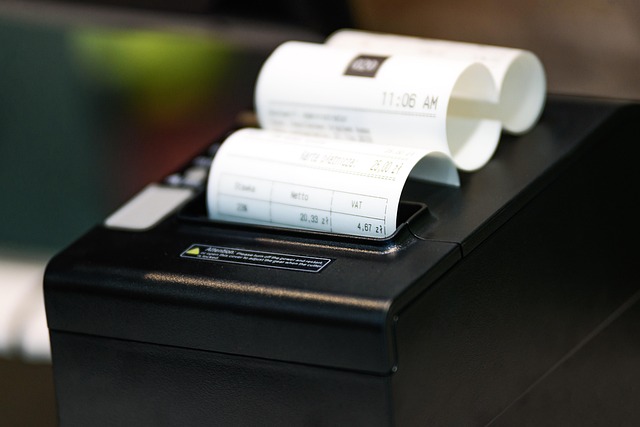The Sarbanes-Oxley Act (SOX) demands rigorous internal controls over financial reporting (ICFR) for public company transparency and investor protection. Certified Public Accountants (CPAs) play a critical role in designing, implementing, and testing these controls within organizations' IT systems. By leveraging robust financial IT solutions, CPAs can streamline processes, maintain data integrity, and ensure secure access controls, facilitating SOX compliance. Key strategies include strong IT system implementation, regular monitoring, testing with specialized tools, continuous monitoring and auditing (CMA), and dedicated cybersecurity practices to safeguard sensitive financial data.
In today’s tightly regulated financial landscape, ensuring your IT systems meet compliance standards is non-negotiable for CPAs. This article guides you through navigating complex SOX (Sarbanes-Oxley) requirements and their impact on accounting practices. We explore the pivotal role of financial IT systems in regulatory compliance, delving into key areas like control implementation, continuous monitoring, and best practices to maintain SOX adherence over time. Armed with this knowledge, accountants can confidently ensure their organizations remain compliant.
- Understanding SOX Compliance: A Fundamental Overview for CPAs
- The Role of Financial IT Systems in Regulatory Compliance
- Key Areas of Focus for Ensuring SOX Adherence
- Implementing Robust Controls within Financial IT Infrastructure
- Continuous Monitoring and Auditing for Effective Compliance
- Best Practices for Maintaining SOX Compliance Over Time
Understanding SOX Compliance: A Fundamental Overview for CPAs

The Sarbanes-Oxley Act (SOX) is a pivotal legislation that has significantly shaped the landscape of corporate governance and financial reporting. For Certified Public Accountants (CPAs), understanding SOX compliance is essential, as it sets rigorous standards for internal controls over financial reporting (ICFR). This legislation aims to protect investors by ensuring the accuracy and reliability of public company financial disclosures. CPAs play a crucial role in this process, as they are often tasked with designing, implementing, and testing these controls within an organization’s IT systems.
SOX compliance involves a comprehensive evaluation of an entity’s internal controls, including those related to IT data systems used for financial reporting. Accountants must ensure that these systems are secure, reliable, and capable of producing accurate financial data. This includes conducting thorough IT audits for accountants, where the integrity and security of regulatory data systems are rigorously examined. By integrating robust IT practices into financial reporting, CPAs contribute to maintaining public trust and ensuring that companies’ financial statements are trustworthy and compliant with legal requirements.
The Role of Financial IT Systems in Regulatory Compliance

Financial IT systems play a pivotal role in ensuring regulatory compliance for CPAs and accountants navigating complex landscapes like SOX (Sarbanes-Oxley) requirements. These systems serve as the backbone of data management, processing, and storage, offering a centralized hub where critical financial information is meticulously recorded, stored, and analyzed. By employing robust financial IT solutions, accounting professionals can streamline their processes, enhancing accuracy and efficiency while meeting stringent regulatory standards.
Regulatory data systems, equipped with advanced audit trails IT features, enable CPAs to track and trace every financial transaction, ensuring transparency and accountability. Access controls accounting mechanisms safeguard sensitive data, limiting access to authorized personnel only. This dual approach – meticulous tracking and secure access – fortifies the integrity of financial records, making it easier for accountants to demonstrate compliance during audits.
Key Areas of Focus for Ensuring SOX Adherence

To ensure SOX (Sarbanes-Oxley) compliance, CPAs must focus on several key areas. Firstly, internal controls are paramount; robust IT systems that safeguard financial data and processes are essential. This includes access controls, data integrity checks, and audit trails to trace all modifications. Secondly, documentation is critical; every control and process must be meticulously documented for transparency and scrutiny during IT audits.
Regular compliance monitoring and testing of these controls are vital to identify and rectify any gaps promptly. Accounting professionals can leverage specialized accounting compliance IT tools to automate many tasks, enhancing efficiency while ensuring data accuracy. By integrating these tools into daily operations, CPAs can streamline the SOX adherence process, facilitating more comprehensive and effective internal control assessments and IT audits.
Implementing Robust Controls within Financial IT Infrastructure

Implementing robust controls within financial IT infrastructure is a cornerstone of SOX compliance for accountants. These controls encompass various measures designed to safeguard data integrity, ensure confidentiality, and promote transparency in financial reporting. CPAs play a pivotal role in designing, implementing, and monitoring these controls, leveraging their expertise to establish processes that align with regulatory standards.
Effective control mechanisms include robust access controls, regular security updates, and meticulous audit trails. For instance, CPA file security protocols ensure only authorized personnel can access sensitive financial data, minimizing the risk of unauthorized alterations or breaches. IT audits for accountants further reinforce these measures by systematically evaluating the effectiveness of controls within regulatory data systems, identifying potential vulnerabilities, and recommending remediation strategies.
Continuous Monitoring and Auditing for Effective Compliance

For CPAs aiming to uphold SOX compliance, implementing robust Continuous Monitoring and Auditing (CMA) practices is indispensable. CMA involves a dynamic approach where financial IT systems are constantly observed and evaluated against predefined regulatory criteria. This proactive strategy ensures that any deviations or potential risks are identified and addressed in real-time, fostering an environment of transparency and accountability. By integrating advanced analytics and automated tools, CPAs can streamline the compliance process, enhancing efficiency and reducing human error.
Moreover, effective CMA promotes a culture of data integrity within financial reporting systems. Regulatory data systems, designed with robust security measures like CPA file security protocols, become cornerstones for reliable financial information. IT professionals play a pivotal role in this regard, continuously refining and updating these systems to meet evolving regulatory demands, thereby empowering accountants to deliver accurate and compliant financial insights.
Best Practices for Maintaining SOX Compliance Over Time

Maintaining SOX (Sarbanes-Oxley) compliance over time is a continuous effort that requires dedicated practices from accountants and their IT teams. One of the best practices involves implementing robust audit trails IT systems, ensuring every transaction and change in the financial reporting process is meticulously documented and traceable. This allows for transparent verification during external audits.
Additionally, establishing stringent access controls accounting measures is crucial to SOX compliance. Restricting access to sensitive financial data based on roles and responsibilities minimizes the risk of unauthorized alterations or fraud. Regular reviews of these access permissions, alongside training sessions for accountants on cybersecurity best practices, help maintain a secure IT environment for financial reporting.
